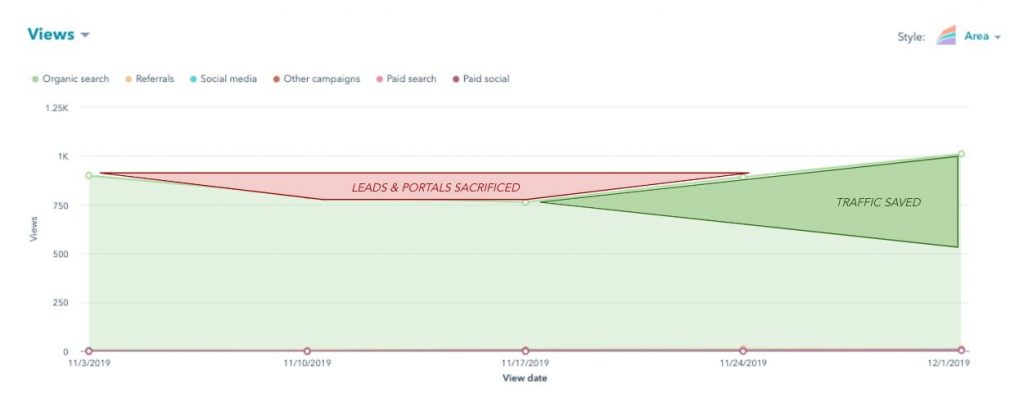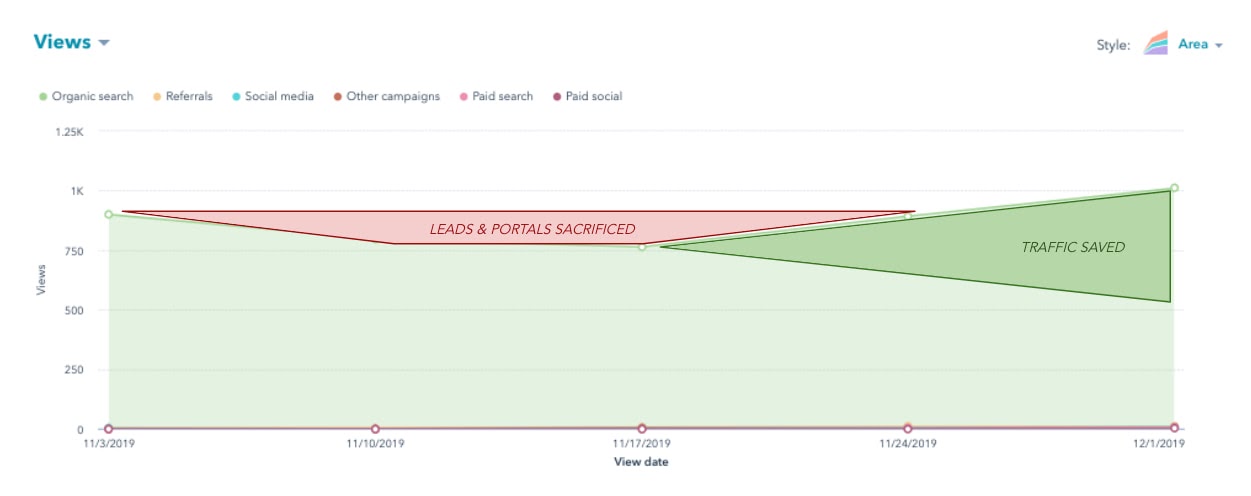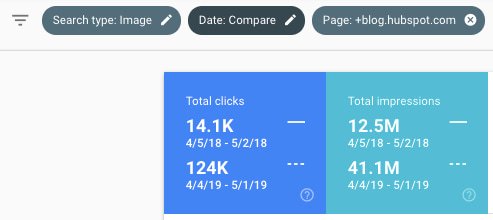Predictive SEO: How HubSpot Saves Traffic We Haven’t Lost Yet

By Braden Becker and Alex Birkett
This post is a part of Made @ HubSpot, an internal thought leadership series through which we extract lessons from experiments conducted by our very own HubSpotters.
Have you ever tried to bring your clean laundry upstairs by hand, and things keep falling out of the giant blob of clothing you’re carrying? This is a lot like trying to grow organic website traffic.
Your content calendar is loaded with fresh ideas, but with every web page published, an older page drops in search engine ranking.
Getting SEO traffic is hard, but keeping SEO traffic is a whole other ball game. Content tends to “decay” over time due to new content created by competitors, constantly shifting search engine algorithms, or a myriad of other reasons.
You’re struggling to move the whole site forward, but things keep leaking traffic where you’re not paying attention.
Recently, the two of us (Alex Birkett and Braden Becker 👋) developed a way to find this traffic loss automatically, at scale, and before it even happens.
The Problem With Traffic Growth
At HubSpot, we grow our organic traffic by making two trips up from the laundry room instead of one.
The first trip is with new content, targeting new keywords we don’t rank for yet.
The second trip is with updated content, dedicating a portion of our editorial calendar to finding which content is losing the most traffic — and leads — and reinforcing it with new content and SEO-minded maneuvers that better serve certain keywords. It’s a concept we (and many marketers) have come to call “historical optimization.”
But, there’s a problem with this growth strategy.
As our website’s traffic grows, tracking every single page can be an unruly process. Selecting the right pages to update is even tougher.
Last year, we wondered if there was a way to find blog posts whose organic traffic is merely “at risk” of declining, to diversify our update choices and perhaps make traffic more stable as our blog gets bigger.
Restoring Traffic vs. Protecting Traffic
Before we talk about the absurdity of trying to restore traffic we haven’t lost yet, let’s look at the benefits.
When viewing the performance of one page, declining traffic is easy to spot. For most growth-minded marketers, the downward-pointing traffic trendline is hard to ignore, and there’s nothing quite as satisfying as seeing that trend recover.
But all traffic recovery comes at a cost: Because you can’t know where you’re losing traffic until you’ve lost it, the time between the traffic’s decline, and its recovery, is a sacrifice of leads, demos, free users, subscribers, or some similar metric of growth that comes from your most interested visitors.
You can see that visualized in the organic trend graph below, for an individual blog post. Even with traffic saved, you’ve missed out on opportunities to support your sales efforts downstream.
If you had a way to find and protect (or even increase) the page’s traffic before it …read more
Source:: HubSpot Blog










